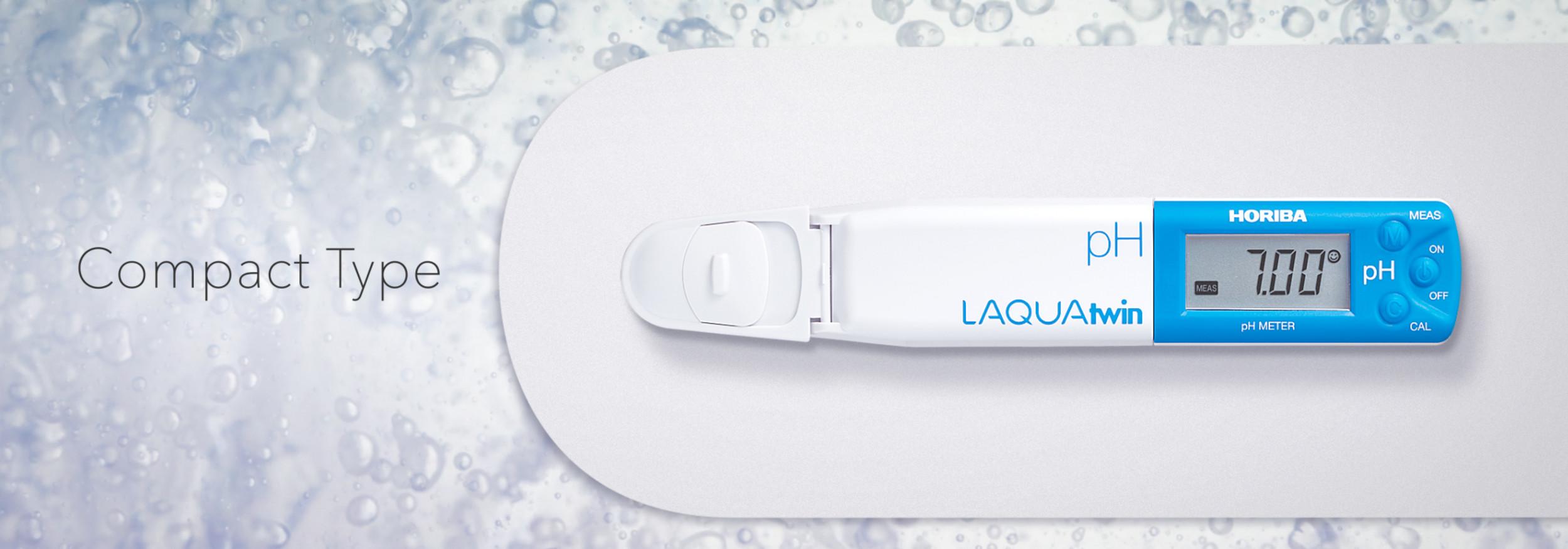
Follow simple, good testing procedures for accurate and dependable results:
Always ensure the sensor is clean before calibrating.
If not, clean thoroughly with water (don’t worry, LAQUAtwin meters are completely waterproof!)
Place some standard solution on the sensor and press the calibration button. Once the smiley face appears indicating that calibration is complete, wash off the standard solution with water and dry with a clean, soft tissue.
Clean the sensor thoroughly with water ready for the next test. When the sensor is nearing the end of its usable lifetime, it can be replaced;* you don’t need to replace the meter.
* Sensors will need to be replaced after approx.
1500 measurements or when calibration cannot be completed. Sensors are sold separately and are easily removed and replaced
Only the LAQUAtwin range allows you to be this flexible! Choose the best method according to your sample, your situation and your needs.
*1 Conductivity meters cannot be tested in solids or powders.
Testing has never been easier!
LAQUAtwin meters have been developed using 60 years of HORIBA know-how to give you the highest quality technology that can be used anywhere and at any time. And they’re so simple to use that you won’t need any training!
Calibrate and measure at the touch of a button — the smiley face will tell you when the result can be read.
Hassle-free automatic calibration with a few drops of standard solution reassures you of your measurement accuracy. Two-point calibration is also possible.
LAQUAtwin: the only meters with flat sensor technology.
HORIBA’s highly-sensitive, flat sensor technology opens up new possibilities for sampling and sample types. Only a small amount of sample is required, so you can easily sample in situ without the need for beakers or other labware.
Sensors are easily replaced as required.
Carry case comes as standard for handy portability.
The compact carry case contains everything you need for your measurements, including the standard solution and sampling sheets.
LAQUAtwin is IP67 rated.
The meter and sensor are fully waterproof*3 and dustproof, so you can take it anywhere.
*3 Will withstand immersion for 30 minutes at 1 m. Not suitable for underwater use.
Do you have any questions or requests? Use this form to contact our specialists.
HORIBA Advanced Techno, Co., Ltd.
31, Miyanonishi-cho, Kisshoin
Minami-ku Kyoto 601-8306 Japan
Tel: +(81) 75 321 7184
Fax: +(81) 75 321 7291
HORIBA Instruments (Singapore) Pte Ltd.
83 Science Park Drive, #02-02A,
The Curie 118258 Singapore
Tel: +65 6 908 9660
Fax: +65 6 745 8155
Mail: laqua(at)horiba.com
HORIBA UK Limited Northampton Office
Kyoto Close,Summerhouse Road,
Moulton Park
Northampton NN3 6FL UK
Tel: +(44) 1604 542 600
Fax: +(44) 1604 542 699
Mail: waterquality(at)horiba.com
HORIBA Instruments Incorporated Head Office
9755 Research Drive
Irvine California 92618 USA
Tel: +1 800 446 7422
Fax: +1 949 468 1790
Mail: labinfo(at)horiba.com
You might also like to know...


